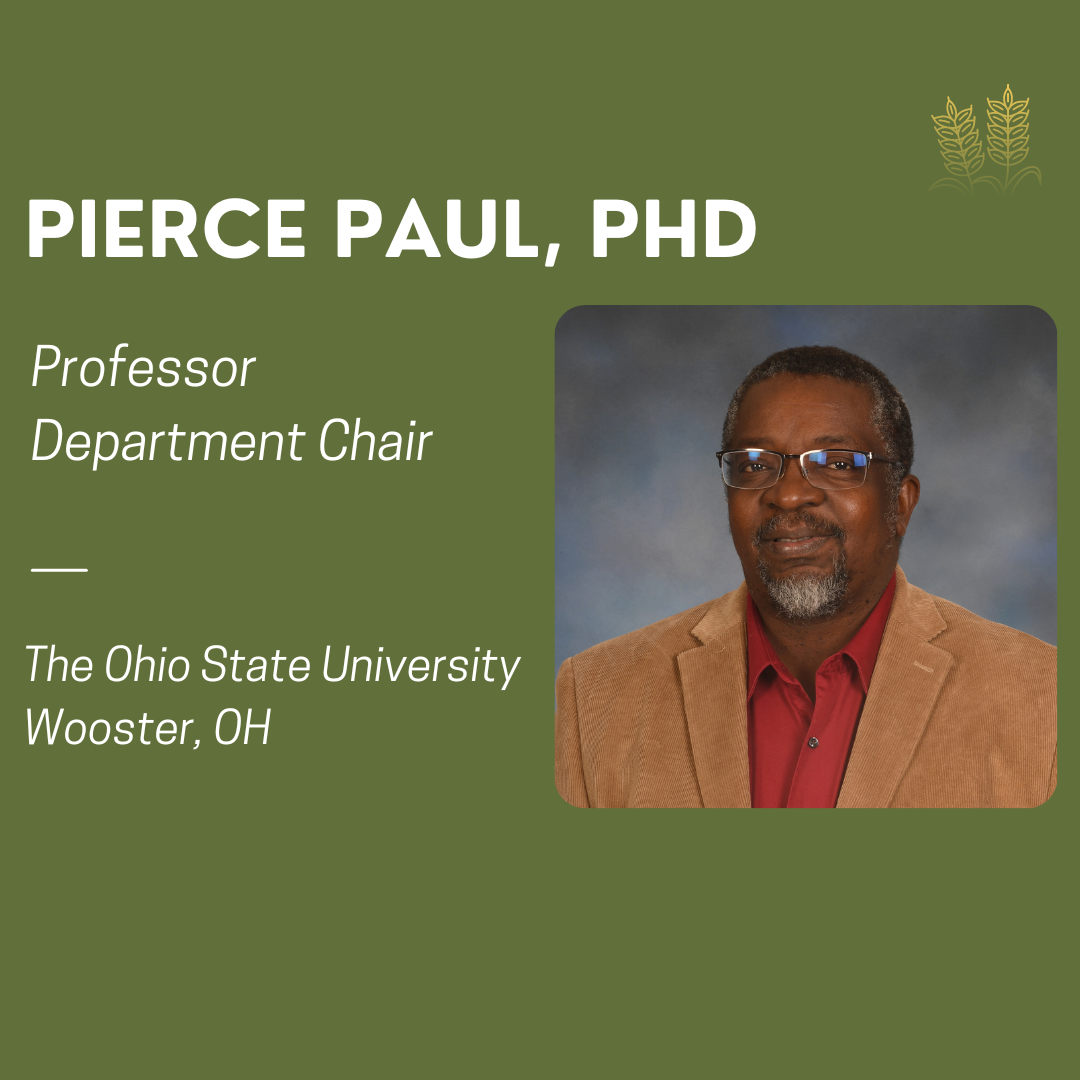Featured Researcher Bio - Pierce Paul 2024

Meet Pierce Paul, a professor of cereal diseases and epidemiology, chair of the Department of Plant Pathology at The Ohio State University, and chair of the USWBSI FHB Integrated Management Coordinated Project (IM-CP) research area committee. Paul has been funded by the Initiative since 2007 and his current projects focus on fungicide and genetic resistance for FHB and DON management of winter wheat in Ohio and improving the stability of the FHB Risk Tool forecasting models.
Discovering a Passion for Plant Disease Epidemiology
Born in Guyana, South America, Paul majored in agronomy earning his bachelor of science degree in 1997 from the Universidade Federal de Vicosa, Brazil. He then went on to complete his master’s degree in plant pathology, graduating in 1999. He attended Iowa State University where he earned his doctorate degree in plant pathology with a minor in statistics. In 2003, Paul started as a post-doctoral researcher at The Ohio State University in Wooster, Ohio working with Pat Lipps and Larry Madden.
Paul’s passion for plant pathology, specifically, plant disease epidemiology and risk assessment began as an undergraduate intern in Brazil. He was also influenced by Larry Madden’s work on disease forecasting for tomato early blight. Supervisors and mentors along the way, including Gary Munkvold, have also helped to solidify his interest in these fields. Paul also finds inspiration in training students and postdocs to be the next generation of researchers.
Coordinating Collaborative Research
Being a part of the USWBSI all began 21 years ago, when Paul started as a postdoctoral researcher working on FHB. He enjoys the opportunities for coordinated and collaborative research that focuses on a single, multifaceted, and complex disease/pathosystem that comes with being involved with the Initiative.
Over the years he’s had plenty of projects. When asked what his favorite is he shared, “I have several, but I’d have to say the Integrated Management Coordinated Project is probably number one.” He’s also quite passionate about the FHB forecasting project he collaborates on as well as working with students on factors that affect grain contamination with mycotoxins.
The IM-CP Research Area produces a lot of data. As chair of the IM-CP, it’s Paul’s responsibility to coordinate treatments and then collate and analyze all the data into a report at the end of the season. The information produced by this group of researchers is important to stakeholders and other researchers as it helps to: 1) increase the understanding of the biology and epidemiology of FHB/DON, 2) develop and update management guidelines and recommendations, and 3) advance the development, validation, and implementation of the FHB forecasting system. This is one of Paul’s biggest accomplishments regarding FHB research.
Working with Stakeholders to Solve Real-Life Challenges
Helping growers tackle challenges their facing is one of his’s priorities. “One of your primary goals should be to help solve real-life problems affecting stakeholders. Listen, observe, collaborate and be creative and willing to innovate and change. There are lots of novel and contemporary research tools/approaches out there that can be used to solve problems, but you still need to have solid and basic foundational knowledge in your field to use them effectively and wisely,” said Paul.
For more information about Dr. Pierce Paul's research, visit his faculty webpage.
To learn more about others in the FHB community, check out all the previous USWBSI Featured Researchers/Advocates.
